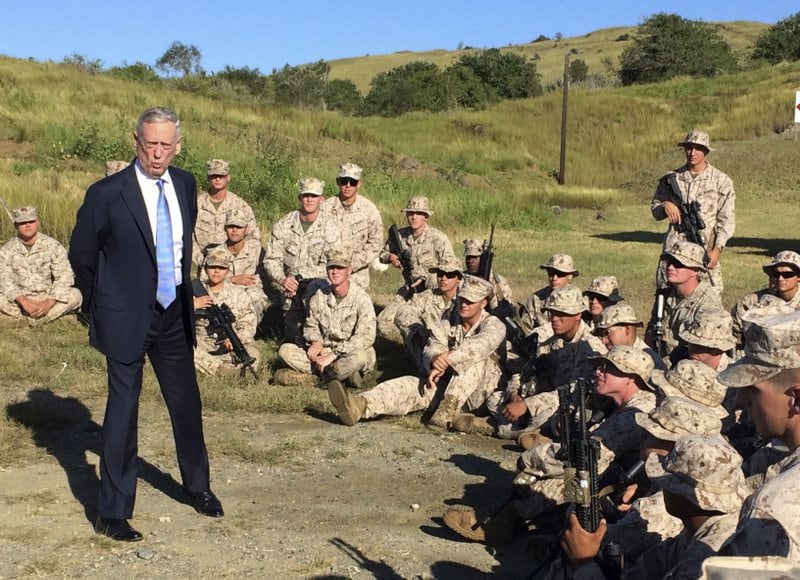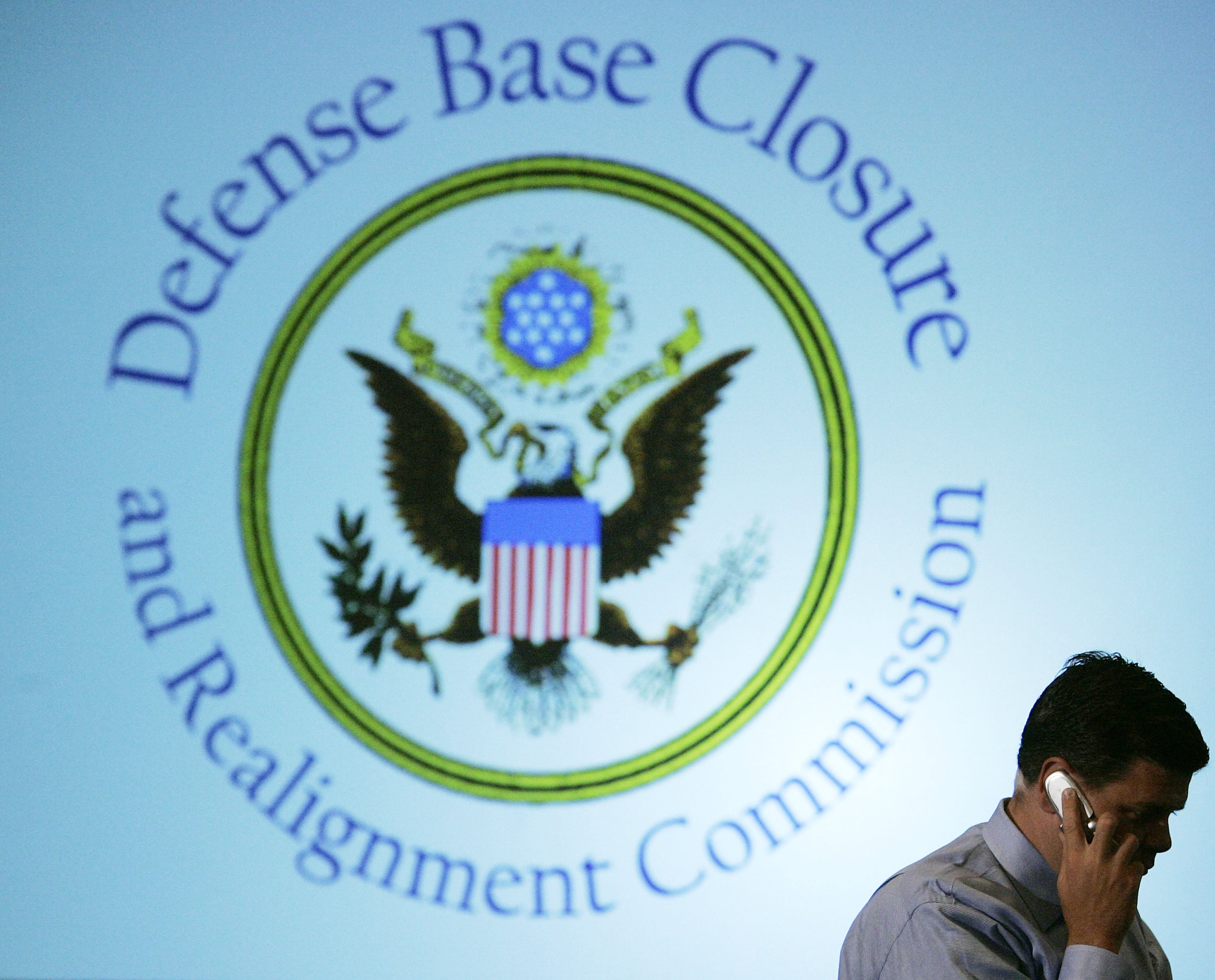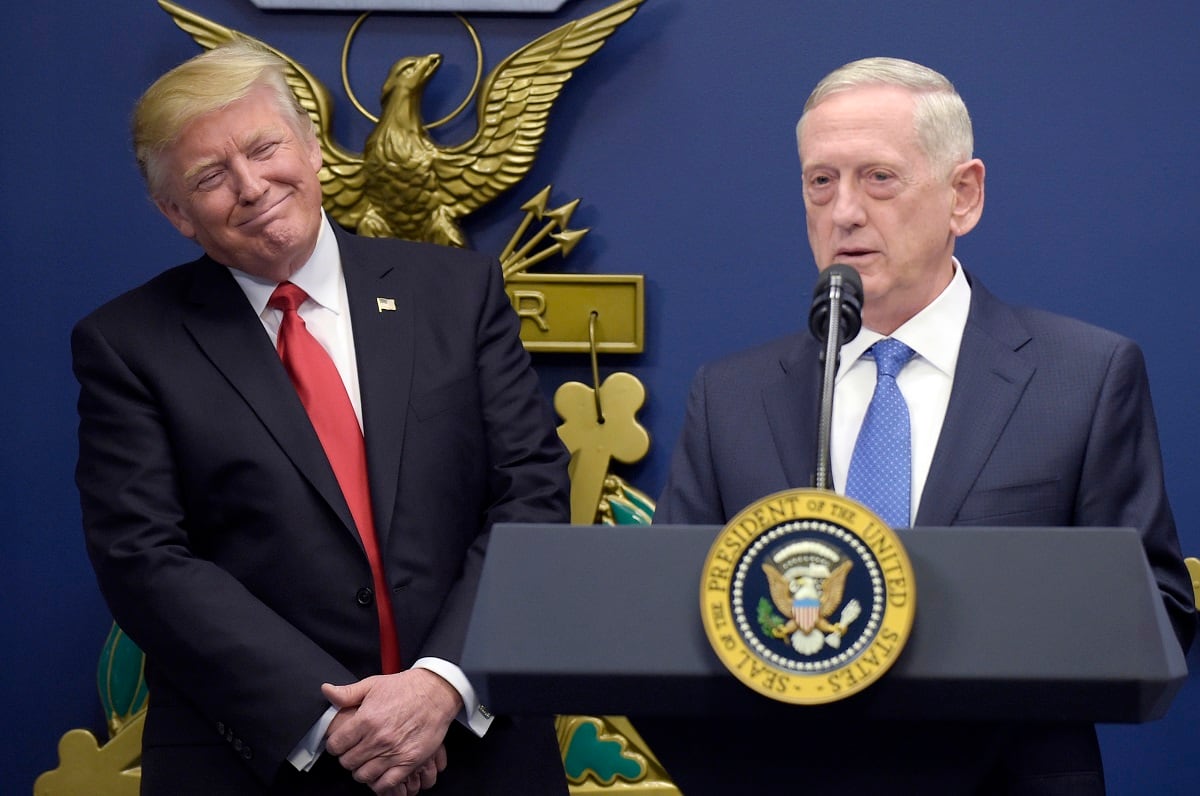WASHINGTON — The Pentagon’s new National Defense Strategy lays out a world where great-power competition, rather than counterterrorism, will drive the department’s decision-making and force structure.
“Inter-state strategic competition, not terrorism, is now the primary concern in U.S. national security,” the 11-page unclassified summary of the strategy reads. Instead, “the central challenge to U.S. prosperity and security is the reemergence of long-term strategic competition,” primarily from China and Russia.
The National Defense Strategy, released Friday, is the second of three interlocking documents that will drive America’s strategic posture. In December, President Donald Trump unveiled his National Security Strategy, which drives the administration’s overall national security posture.
The NDS focuses on the Pentagon’s goals within the NSS and is driven by Defense Secretary Jim Mattis. That will be followed later this year by the National Military Strategy, written by Gen. Joe Dunford, the chairman of the Joint Chiefs of Staff, which explains how the Pentagon will operationalize the NDS.
At Johns Hopkins University on Friday, Mattis said the document represents a “clear-eyed appraisal” of America’s spot in the world,
“This required tough choices — and we made them based upon a fundamental precept: namely, that America can afford survival,” the secretary said in prepared remarks.
Speaking ahead of the document’s release, Elbridge Colby, deputy assistant secretary of defense for strategy and force development, said the document was thematically driven by the idea that the “central challenge facing the department of defense and the joint force [is] the erosion of U.S. military advantage vis a vis China and Russia.”
But while great-power competitors are very much front of mind, Colby added that “this is not a strategy of confrontation, but it is a strategy that recognizes the reality of competition and the importance of ‘good fences make good neighbors.’ ”
RELATED

And despite the statement in the document, Colby stressed that this does not represent a shift away from fighting terrorism, but rather a realistic acknowledgement that counterterrorism operations are not likely to end anytime soon.
“One of the things the strategy is trying to do is say is that we know we are going to be dealing with terrorism in one way or another for the long haul — so let’s figure out ways of doing it that are more cost effective, that are more tailored — that allow us to walk and chew gum at the same time,” he said, adding that there is no assumption of a withdrawal from antiterrorism operations involved in this strategy.
Overall, the document bears a clear thumbprint from Mattis, broken down by his stated trio of priorities: strengthening allies and partners, increasing lethality for the war fighter and reforming the business practices of the Pentagon.
“The department will do more than just listen to other nations’ ideas — we will be willing to be persuaded by them,” Mattis said. “Not all good ideas come from the country with the most aircraft carriers.”
The document identifies three key theaters of focus — the “Indo-Pacific,” Europe and the Middle East. However, Colby denied that means the U.S. is abandoning areas such as Africa or South America; instead, he described it as realistically focusing resources where they are most needed.
He also said the classified version of the document is about five times the size of the unclassified version, which, if accurate, would put the document at around 50 pages — much thinner than previous strategy products.
Resource constraints
The strategy release comes the same day Congress is scrambling to avert a government shutdown, with the best case scenario likely to be extending the continuing resolution — which locks in budget numbers at fiscal 2017 levels — into a fifth month. Pentagon officials have consistently harped on what damage occurs with both a shutdown and under a CR.
Speaking ahead of the document release, Todd Harrison, a defense budget expert with the Center for Strategic and International Studies, warned that “a strategy that is set without regard for resource constraint is a strategy that risks being unexecutable” in practice.
“If it’s just a lot of words on a page and it doesn’t have numbers, saying ‘this is what it will cost and this is what we’re able to do,’ and ‘this is how we will pay for it,’ it will leave a lot wanting,” he added.
The document released to the public did not include any hard numbers. Asked how much budget realities factored into the strategy, Colby said the document was “not obtuse to resource requirements” but that the focus was on developing the strategy first.
“The leadership was actually conscious to say, look, we should have a strategy that is really a strategy that will then drive the budget. But we’re not saying we are going to have an $8 trillion defense budget,” Colby said. “I would say it’s been a realistic look at the environment – of course not just our own funding requirements but also the reality of China as an economy having the same order of magnitude as our own.”
Those economic realities extend to allies, with the strategy calling for allies to “pool resources and share responsibility for common defense.” That includes the goal, stated by several DoD officials in recent weeks, of getting equipment to partners more quickly, with the document pledging to “prioritize request for U.S. military equipment sales, accelerating foreign partner modernization and ability to integrate with U.S. forces.”
Developing technology faster
The strategy contains a section focused on reforming the department’s business structures and getting technology to the warfighter in a more timely fashion.
“Success does not go to the country that develops a new technology first, but rather to the one that better integrates it and swiftly adapts its way of fighting,” Mattis said in his remarks.
To do so, the document urges a focus shift from developing a perfect system to getting things into the field and then upgrading them.
“The department is over-optimized for exceptional performance at the expense of providing timely decisions, policies and capabilities to the warfighter. Out response will be to prioritize speed of delivery, continuous adaptation and frequent modular updates,” the strategy reads.
The strategy also warns that it is “expected” that the service and agency heads will look to “consolidate, eliminate or restructure” offices as needed to speed up processes. A request for another round of base closure and realignment is also promised, although that remains a tough sell with Congress.
Another notable statement is the pledge of a “major departure from previous practices and culture” in the acquisition realm.
RELATED

“The Department will realign the incentive and reporting structure to increase speed of delivery, enable design tradeoffs in the requirements process, expand the role of warfighters and intelligence analysts throughout the acquisitions process, and utilize non-traditional suppliers,” the document reads. “Prototyping and experimentation should be used prior to defining requirements and commercial off-the-shelf systems. Platform electronics and software must be designed for routine replacement instead of static configurations that last more than a decade.”
Along with that, the document pledges to “streamline processes” so that new companies can enter the defense industrial base with ease, and seek to “cultivate international partnerships to leverage and protect partner investments in military capabilities” ― perhaps welcome news to partner nations who have long complained the Pentagon would rather reinvent the wheel than buy one made abroad.
Among technologies prioritized in the document: developing “resilient, survivable, federated networks and information ecosystems” that can “gain and exploit information” and provide attribution to cyberattacks; transitioning to “smaller, dispersed, resilient adaptive basing” over traditional centralized infrastructures; prepositioning stocks and munitions to ensure the logistics tail never breaks down; and investing “broadly” in artificial intelligence, something outlined in the National Security Strategy.
Tara Copp contributed to this report.
Aaron Mehta was deputy editor and senior Pentagon correspondent for Defense News, covering policy, strategy and acquisition at the highest levels of the Defense Department and its international partners.




